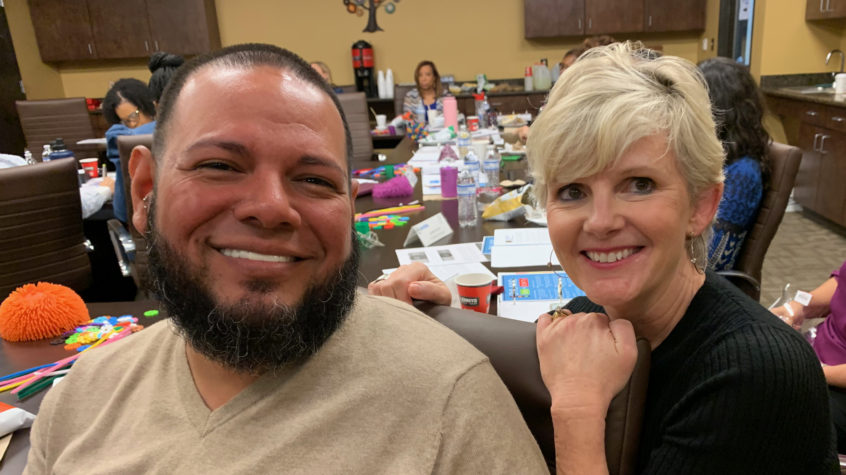by Rachel Burstein
Case Study on SVPSA Fellowship
Robert Salcido, Jr., Executive Director at Pride Center San Antonio
In the early days of the pandemic, Pride Center San Antonio scrambled to deliver on its mission to provide services and support to the LGBT+ and ally community in San Antonio. Pride Center executive director Robert Salcido, Jr., remembers that the Center could no longer offer the literal, physical safe space that had been core to its service delivery model. “Our center completely shut down…We transformed all of our services to meet the needs, but online.”
That meant offering counseling sessions virtually and developing an emergency fund to support community members who were affected by COVID-19-related layoffs. It also meant contending with a digital divide that made it initially difficult for some San Antonians to access the Pride Center’s new digital services. And it meant simultaneously increasing the Center’s reach to members of the community who had never accessed in-person programs but were attracted to virtual offerings.
As Salcido describes it, the “flip of the switch” from in-person gatherings to virtual programs impacted the Center’s financial picture as well. Center staff had to modify existing grants and benchmarks to account for the change in services. In addition, the Pride Center saw a decline in donations from individuals as community members experienced their own financial hardship. At the same time, the Center saw an increase in support from philanthropic foundations and other community groups. Salcido says, “They were really stepping up, seeing that these hardships were occurring.”
Those early experiences during the pandemic gave Salcido and the Center new ideas for how to create community. Salcido says, “Community stepped up and helped one another. We are a very compassionate city and it showed in those times of need.”
The first convening of the SVPSA Fellowship was Salcido’s first in-person full-day meeting since the pandemic began. Through the Fellowship, he began to figure out new ways to leverage the power and compassion of San Antonio’s nonprofit and philanthropic sectors that the Pride Center had experienced during the early days of the pandemic.
Salcido says, “The Fellowship not only provided growth for me as a leader….but it also provided me with a sense of community that was long-missing because of the pandemic.”
For Salcido, intentional community-building and outreach to other organizations within the city of San Antonio is important if the Pride Center is to deliver on its mission. Salcido explains that because of a history of silence and fear of discrimination within the LGBTQ+ community, the Center long “operated in a silo,” without a lot of deep connections to other nonprofits. The Fellowship gave Salcido “the opportunity to be in the same room with other leaders from other nonprofits that may or may not have ties to the LGBTQ+ community directly.”
Those relationships have directly benefited the people who receive services from the Pride Center. Salcido says that the Center is now better able to respond when “somebody comes to the Center saying, ‘I need services because I have a parent with Alzheimer’s.’ Or kidney disease. Or, ‘I need an organization that offers educational opportunities.’” Ultimately, Salcido says, “The more people we know in the community, the better.”
Now that he’s almost finished with the Fellowship, Salcido says that he’s envisioning more opportunities to work together with the other nonprofits in the Fellowship. That means not only building joint programs, but also partnering with other Fellowship participants to make the LBGTQ+ community more visible in San Antonio. Salcido would like to offer training sessions to nonprofit boards and staff “to educate the community about the community that we serve.”
In that way, Salcido will be drawing on Fellowship connections to not only better deliver on the Pride Center’s mission of creating community, but also to extend that community across San Antonio.

